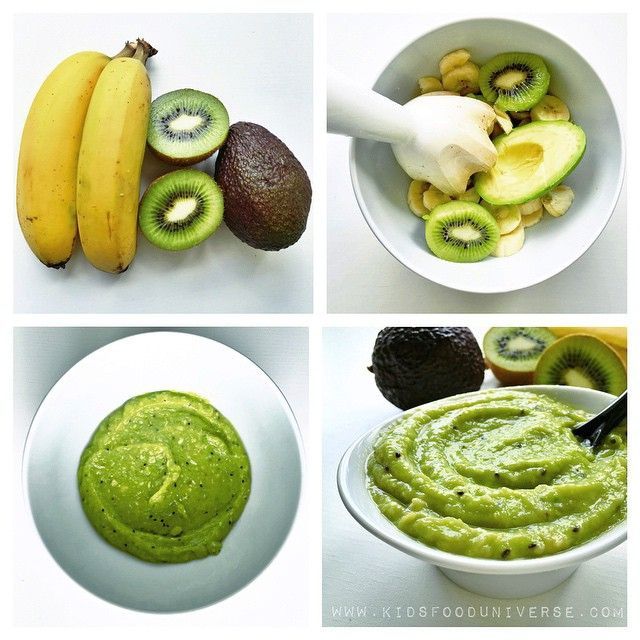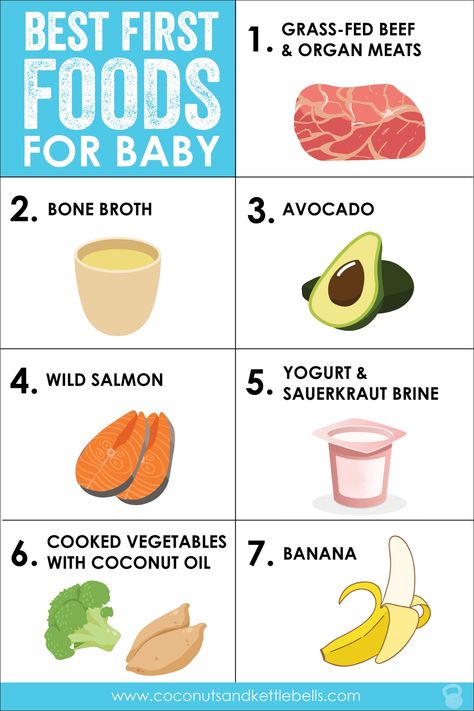Avocado combination baby food
Tasty Avocado Baby Food Combinations
These simple avocado baby food recipes are lip-smacking good
By Sarah Prager
Avocado baby food offers a nutritious first step in solid foods for babies. To begin with, avocados contain 20 vitamins and minerals, including folate, potassium, iron, zinc, and vitamins A, C, E, and K, plus several variants of vitamin B. In addition, avocados are packed with protein, fiber, and healthy fats without no cholesterol or sodium. Avocados are very low in saturated fat, too. Babies need omega-3 fatty acids to promote brain and eye development, and avocados are one of the fattiest plant foods that are a great source of oleic acid, an important omega-3 that’s also found in olive oil.
Contents
- Easy, fun-flavored yummy avocado/fruit puree
- Super nutritious, avocado/green vegetable puree
- Crispy, easy-to-grab coated avocado slices
- Vitamin-packed avocado/banana smoothie
- Avocado baby food and sweet potato puree
- Delicious avocado blueberry muffins
- Protein Power avocado/egg puree
- How early can avocados be introduced to baby?
Conveniently, avocados are also soft and easy for babies to gum and swallow. They’re simple for busy parents and caregivers to mash with a fork or puree in a food processor. Plus, avocados are easy to combine with other healthy foods for simple baby foods. So, which avocado baby foods should you make at home? Here are seven simple recipe ideas for your little one to enjoy that are a snap to make.
Related Videos
Easy, fun-flavored yummy avocado/fruit puree
For a quick avocado baby food meal, puree avocado in a food processor or small blender with a sweet fruit, and your baby will gobble it up. Here are some fruits that make a tasty combination with avocado:
- Banana
- Apple
- Pear
- Kiwi
- Pineapple
- Strawberry
With these purees, as with any baby food purees, you can add water, breast milk, or formula to change the consistency. Avocados are rather firm and will make a whipped consistency, but if you add liquid, the puree will thin out. The thinner the consistency, the easier the puree is for a baby to swallow. There isn’t any need to cook avocados, but with harder fruits like apples, you may want to steam them first before pureeing.
There isn’t any need to cook avocados, but with harder fruits like apples, you may want to steam them first before pureeing.
You can also alternate the amounts of each ingredient as needed. You can add one whole avocado in with half an apple of steamed slices with a little water, or you could throw in one to 10 strawberries, depending on what you find your baby prefers. The avocado to fruit ratio is totally up to you and dependent on what baby likes.
Super nutritious, avocado/green vegetable puree
Go green with this tasty and healthy avocado/veggie puree. These vegetables make nutritious and delicious combo purees with avocado:
- Peas
- Broccoli
- Kale
- Spinach
- Asparagus
Just like the fruit purees, you can add liquid to change the consistency and play with the ratio to find the combination your baby likes best.
Crispy, easy-to-grab coated avocado slices
If you’ve ever tried serving your baby raw avocado, you know it’s very slippery.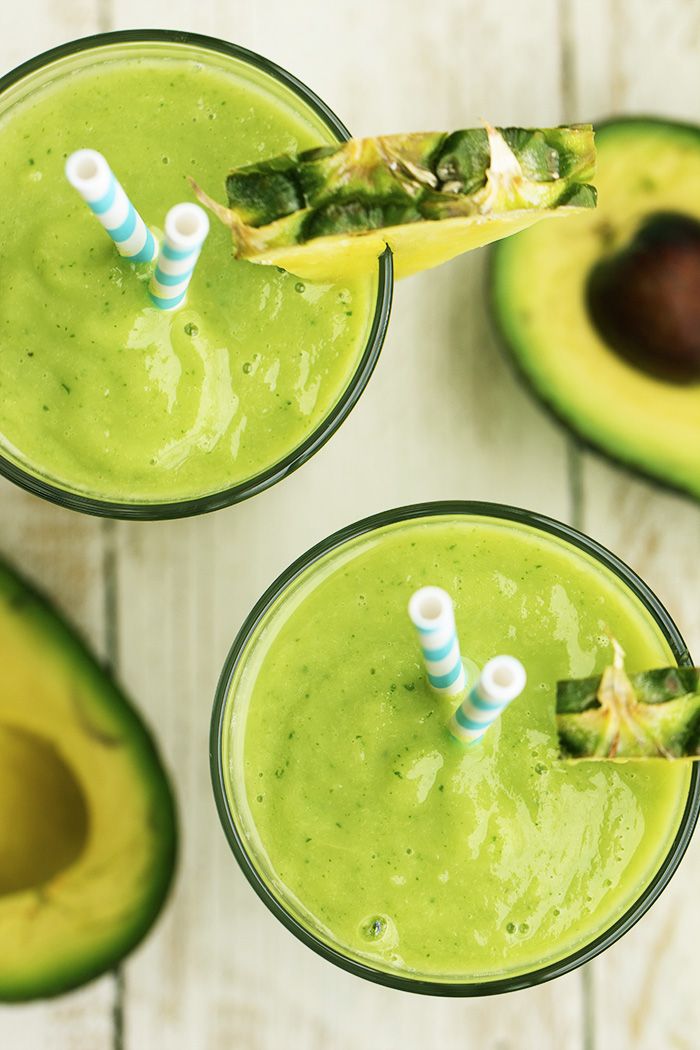 However, cutting the avocado into slices allows babies to grasp and feed themselves, helping to develop fine motor skills. Moreover, you can coat the slices in a breadcrumb mixture made of crumbled baby crackers, puffs, or wafers to make the slices easier to hold. It also makes good use of the dust at the bottom of the puffs container.
However, cutting the avocado into slices allows babies to grasp and feed themselves, helping to develop fine motor skills. Moreover, you can coat the slices in a breadcrumb mixture made of crumbled baby crackers, puffs, or wafers to make the slices easier to hold. It also makes good use of the dust at the bottom of the puffs container.
Vitamin-packed avocado/banana smoothie
Of course, you can DIY any smoothie recipe, but here are a few avocado combos perfect for a nutritious smoothie for baby:
- Avocado, banana, spinach, and yogurt
- Avocado, banana, blueberries, and baby oatmeal
- Avocado, banana, mango, and peach
- Avocado, banana, and strawberries
Mix and match all you want to find that perfect avocado/banana smoothie your baby loves. Pop it all in the blender with your choice of liquid (water, breast milk, or formula) and you’re done! You can add flax or chia seeds to any of these recipes for extra nutrition or maple syrup for a touch of sweetness.
Avocado baby food and sweet potato puree
Sweet potatoes are cheap, naturally sweet on the little one’s taste buds, and easy to cook and puree. After you cook two cups of diced sweet potatoes, mix them with the pulp of one avocado in a blender. Then, add one cup of water at a time, until you get the thickness of the puree you’re looking for.
Delicious avocado blueberry muffins
If you’re ready to get more complex, go all out by baking avocados into muffins using this recipe. You’ll get 36 mini muffins that store in a Tupperware container on the counter for a week. This one is best for older babies who can chew beyond purees. They’re great for toddlers too.
Protein Power avocado/egg puree
For this nutrition powerhouse meal, add a hard-boiled egg (never serve raw or undercooked egg to a baby) to a half of an avocado with a tablespoon of water (or breast milk or formula) and blend. For even better consistency, add only the hard-boiled yolk to the mixture and set the hard-boiled whites aside for another recipe.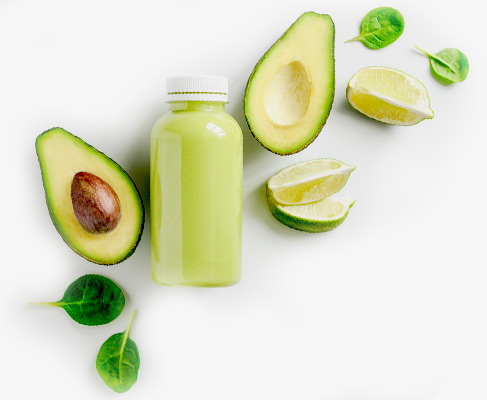
How early can avocados be introduced to baby?
You can give your baby their first taste of avocado right around the six-month milestone. It’s around the same time that you’ll be introducing fruits, vegetables, and solid foods other than rice cereal.
Feeding a baby raw, mashed avocado is certainly a good introductory food, but with these combinations, you’ll be enhancing the flavors and increasing the nutrition, all while helping to avoid a picky eater by giving a diversity of tastes in each meal. An avocado can freeze for up to a month before losing its nutritional value and taste, so store the extra puree in ice cube trays and defrost as needed. Since avocados can turn brown so quickly, freeze them right away if you’re not going to serve them immediately. Don’t forget to sneak yourself a taste while you’re cooking. Avocados are a healthy pick for adults too.
Editors' Recommendations
- 5 healthy detox soups to feed your family this spring
- Tasty St.
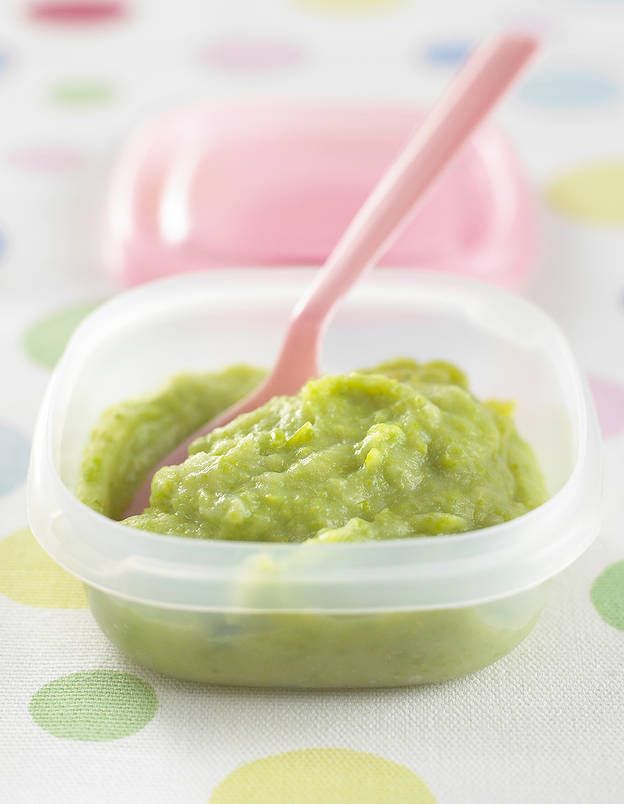 Patrick’s Day recipes to bring the tradition to the family’s dinner plate
Patrick’s Day recipes to bring the tradition to the family’s dinner plate - Make these easy Super Bowl snacks the whole family will love
- These 9 easy no-bake recipes for kids are perfect for independent bakers
- 8 healthy Instant Pot recipes that will please every family member
11 Tasty And Easy-To-Make Avocado Baby Food Recipes
Nutritious avocado preparations make it easier to include the fruit in your baby's balanced diet.
Research-backed
MomJunction believes in providing reliable, research-backed information to you. As per our strong editorial policy requirements, we base our health articles on references (citations) taken from authority sites, international journals, and research studies. However, if you find any incongruencies, feel free to write to us.
Avocado is frequently used in baby foods because of its creaminess and easy-to-process pulp. Additionally, you may wish to introduce several avocado baby food recipes because they are high in essential nutrients, such as vitamins and minerals, and a balanced quantity of fats, all of which are important for a growing infant.
Additionally, you may wish to introduce several avocado baby food recipes because they are high in essential nutrients, such as vitamins and minerals, and a balanced quantity of fats, all of which are important for a growing infant.
Many parents wonder whether avocado can be given as the first food to a baby who has just started eating solids. This article discusses various aspects of avocado for babies and provides the finest avocado-based baby food recipes.
When Can Babies Have Avocado?
Introduction to solids usually starts at six months of age and avocado can be the first food for your baby (1). While the creamy texture comes from fat, it is a “good” fat, and is vital for the baby’s growth. Avocados are also packed with several other vital nutritious ingredients, thus making it a superfood for babies.
Related: 7-Month-Old Baby's Food: Solids, Food Chart And Recipes
Health Benefits Of Avocado For Babies
Your baby reaps the following health benefits when he eats avocado:
- Keeps the nervous system healthy: Avocado contains more folic acid (also called folateiXB vitamin vital for blood cells formation or vitamin B9) than many other fruits.
 Folic acid is essential for the healthy development of the nervous system. It also plays a vital role in brain development and boosting cognitive abilities. Regular consumption of avocado can act as a nervous system tonic for your little one (2).
Folic acid is essential for the healthy development of the nervous system. It also plays a vital role in brain development and boosting cognitive abilities. Regular consumption of avocado can act as a nervous system tonic for your little one (2).
- Provides good fat for growth: The fat found in avocados consists of monounsaturatediXA type of dietary fat fatty acids, which help in the growth and development of the body. This means you can feed your baby an avocado every day without worrying about them becoming overweight (3).
Related: Are Fat Babies Healthy And When Is It A Concern?
- Good for gross motor skills: An avocado has more potassium than a banana (4). A healthy intake of potassium is essential for proper functioning of the skeletal muscles (5). The health of the skeletal muscles, in turn, determines the progress of the gross motor skills.
- Boosts immunity: Avocados contain several micronutrients and vitamins.
 The fruit is rich in vitamin B6 that is vital for maintaining healthy immunity, which in turn protects the infant from a host of illnesses (6) (7).
The fruit is rich in vitamin B6 that is vital for maintaining healthy immunity, which in turn protects the infant from a host of illnesses (6) (7).
- Improves eye health: Avocado is rich in antioxidants luteiniXAn oxygenated carotenoid present in vegetables and fruits and zeaxanthin that accumulate in the eyes and improve vision. These antioxidants also help protect the eyes from degenerative effects of the ultraviolet rays from sunlight (8).
Related: When Can Babies See Clearly And Their Vision Development
Nutritional Value Per 100g Of Avocado
| Nutrient | Unit value per 100g |
|---|---|
| Energy | 160kcal |
| Carbohydrates | 8.53g |
| Natural sugars | 0.66g |
| Fiber | 6.7g |
| Protein | 2g |
| Fat | 14.66g |
| Calcium | 12mg |
| Iron | 0. 55mg 55mg |
| Magnesium | 29mg |
| Phosphorus | 52mg |
| Potassium | 485mg |
| Sodium | 23mg |
| Manganese | 0.142mg |
| Copper | 0.19mg |
| Zinc | 0.64mg |
| Selenium | 0.4µg |
| Fluoride | 7µg |
| Vitamin C | 10mg |
| Vitamin B1 (Thiamin) | 0.067mg |
| Vitamin B2 (RiboflaviniXA B vitamin found in plant and animal-based foods ) | 0.13mg |
| Vitamin B3 (Niacin) | 1.738mg |
| Vitamin B5 (Pantothenic acid) | 1.389mg |
| Vitamin B6 | 0.257mg |
| Vitamin B9 (Folate) | 81µg |
| CholineiXA vitamin B complex nutrient required for bodily functions | 14.2mg |
| Vitamin A | 7µg |
| Vitamin E | 2.07mg |
| Vitamin K | 21µg |
Source: United States Department of Agriculture (9)
Now, let’s look at some tips for cooking and storage of avocados.
How To Select And Store Avocados?
Selection: Avocados you buy in the market are often unripe. While it is okay for adults, babies will probably not like the slightly bitter taste of the unripe fruit.
- The best way to check if an avocado is ripe is to gently press it in the palm of your hand. A ripe avocado will feel firm, but yield a bit to the pressure from the hand (10). An unripe avocado will feel palpably hard, and an overripe one will crack or burst open when pressed.
- Choose avocados that have a dark green skin and a rough and bumpy feel.
- Observe the pulp once you cut an avocado at home. The pulp of a ripe avocado is light green and gets yellowish-green around the skin of the fruit.
Storage: It is best to consume sliced avocados fresh since the pulp is rich in fat and could be susceptible to bacterial degeneration. Sliced avocado can be stored in the form of purees and mashes. To do this, slice the avocados and turn them into puree, pour the puree into an ice cube tray, and freeze it (11). Consume it within a couple of days by thawing the fruit before eating.
To do this, slice the avocados and turn them into puree, pour the puree into an ice cube tray, and freeze it (11). Consume it within a couple of days by thawing the fruit before eating.
Quick tip
Sprinkle some fresh lemon juice on cut or pureed avocado, which you intend to store, to preserve the color and taste.
Fresh fruit should be your first option since even the frozen avocado puree can lead to loss of nutrients.
Selecting and storing avocados is easy. And, in the next section, we tell you how to cook avocados for your baby.
How To Process Avocados For Baby Food?
Avocados are best eaten raw. Just like bananas, you remove the peel of the avocado and eat the pulp. Boiling or direct heating can make oils in the avocado pulp taste unappealing (12). However, you can bake and grill an avocado. You can also process the raw pulp for baby food. Here are the different ways to process avocados to instill baby-friendly flavors:
- You can grill avocados either on a conventional charcoal grill or in an oven.
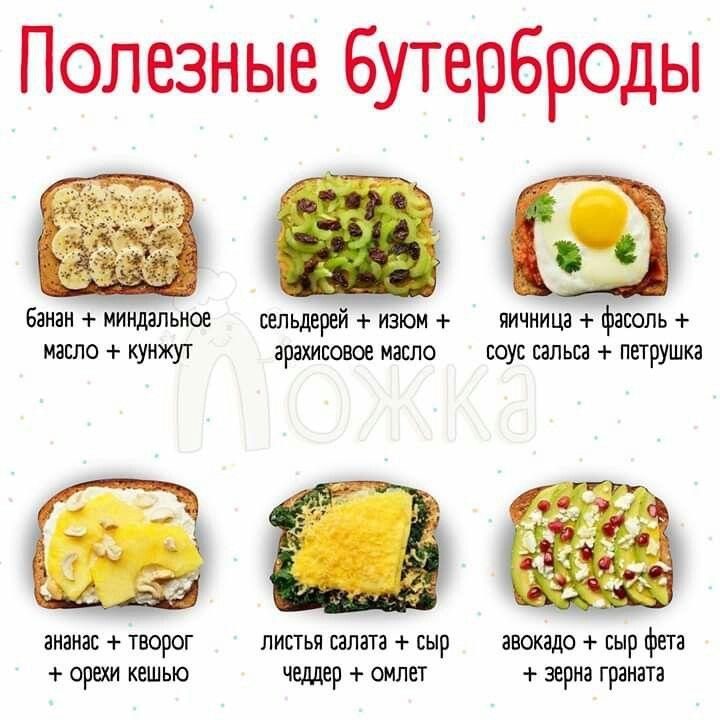 Cut the avocado into two, remove the seed, and cut the fruit lengthwise into thin slices. Grill the slices for three minutes. If you intend to cook in an oven, then preheat the oven to 400ºF (200ºC). Place the avocado slices on an oven grill and grill for ten minutes.
Cut the avocado into two, remove the seed, and cut the fruit lengthwise into thin slices. Grill the slices for three minutes. If you intend to cook in an oven, then preheat the oven to 400ºF (200ºC). Place the avocado slices on an oven grill and grill for ten minutes.
- To bake, cut the avocados the way you want – either slices or small chunks. Preheat the oven to 425ºF (218ºC). Bake the avocado for 20 minutes.
- Scoop out the pulp on a plate and use a fork to mash it. You can feed mashed pulp to the baby without any further processing.
- Pureeing the fruit is easy. Transfer the scooped pulp into a blender, add some water, and blend it till you attain a desired consistency.
- You can blend avocado with baby formula to add flavor to it.
Quick tip
You can use guacamole as a dip for toasted bread, whole wheat soft pita or to dunk steamed vegetables.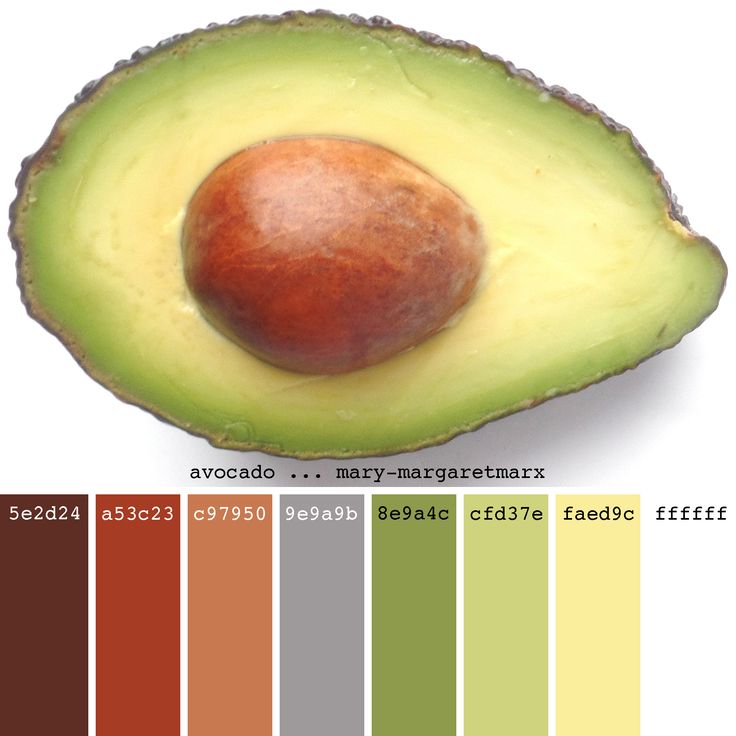
Now, let’s take a look at a few recipes that use the above techniques of cooking the fruit.
Amazing Avocado Baby Food Recipes
Avocado makes an excellent accompaniment to several food items, thanks to its creamy texture and taste. Various food combinations using avocados can help in offering different textures and introducing new flavors to the baby. Here we present 11 delicious homemade baby food recipes using avocado.
1. Pear and avocado puree
Image: Shutterstock
This easy-to-prepare fruit puree combines pear’s subtle sweetness with avocado pulp’s creamy texture to create a delicious combination.
You will need:
- 1 pear
- 1 avocado
- 1-2 cups water
How to:
- Slice out the avocado pulp. Chop the pear into smaller pieces.
- Transfer it to a blender. Add water, and blend.
- To thicken the puree add a bit more avocado pulp and to thin it, add some water.

2. Avocado and banana mash
Image: Shutterstock
The sweetness of banana meets the creaminess of avocado to make this fruity dessert for your little one.
You will need:
- 1 banana
- 1 avocado
How to:
- Put the avocado pulp and the banana in a bowl. Mash them together with a fork.
- Add some water if the mixture gets mushy, or you can also add some formula milk.
- Once the mashed fruits attain desired consistency, the dish is ready to be served.
3. Sweet potato and avocado puree
Image: Shutterstock
Sweet potato goes well with avocado to make a nutritional baby food that naturally tastes sweet.
You will need:
- 2 cups diced sweet potato
- 1 avocado
- 4 cups of water
How to:
- Transfer the sweet potatoes into a cooking vessel along with water.
 Boil the sweet potatoes for 25 minutes. You can also pressure cook them for four whistles.
Boil the sweet potatoes for 25 minutes. You can also pressure cook them for four whistles. - Sieve out the sweet potatoes from the water and let it cool. Transfer the pulp of the avocado into a blender and add a cup of water.
- Add the boiled sweet potatoes to the blender and blend them. Pour more water if required and combine till you achieve the desired consistency.
4. Mango and avocado puree
Image: Shutterstock
You can combine the delicious tropical fruit with avocado to either make a puree or smoothie.
You will need:
- 1 mango
- 1 avocado
- 1 cup water
How to:
- Peel the mango and scoop out the pulp into a blender. Add the avocado pulp as well.
- Add some water and blend them till desired consistency.
- You can also add formula milk instead of water to make it into an avocado mango smoothie.
5. Chicken and avocado puree
Image: Shutterstock
Combine the protein-rich chicken with the good fat of avocado to make an avocado meal for your baby.
You will need:
- 1 1/2 cups of boneless chicken pieces
- 1 avocado
- 4-5 cups of water
How to:
- Boil the chicken for 25 minutes on medium flame or pressure cook it for up to four whistles from the cooker.
- Let the chicken cool. Do not discard the stock (the chicken water).
- Scoop out the pulp of avocado into the blender. You can add the pulp directly or bake it in an oven at 425ºF (218ºC) for 20 minutes.
- Transfer the avocado and the chicken, with its stock, into a blender.
- Blend until the chicken and avocado have adequately mixed.
6. Carrot and avocado puree:
Image: IStock
Carrots are rich in vitamins thus making this combination of avocado and carrots an excellent multi-vitamin meal for an infant.
You will need:
- 1 cup diced carrots
- 1 avocado
- 3-4 cups of water
How to:
- Cook the carrots by boiling them in water for 20 minutes on a medium flame.
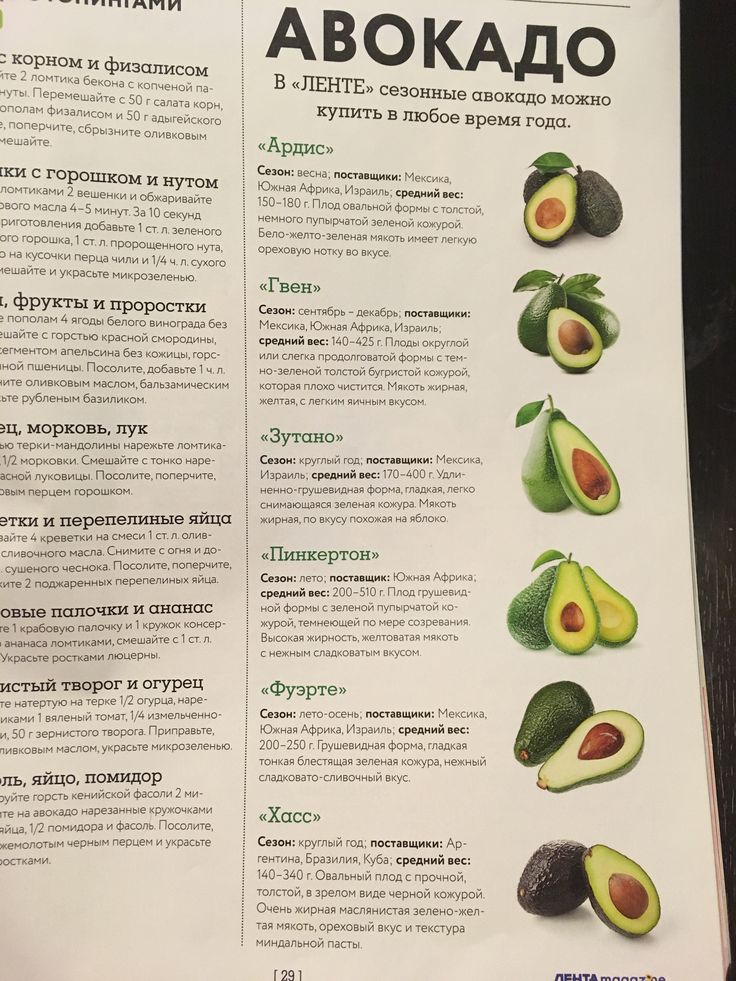 You can also pressure cook it for three steam whistles.
You can also pressure cook it for three steam whistles. - Cool the carrot with the stock.
- Transfer avocado pulp into a blender, add the carrots and the stock and blend till you achieve the desired consistency of the puree.
7. Peas and avocado mash
Image: Shutterstock
Mashed peas and avocado should surely be a green, delight packed with protein from peas and healthy fats from avocado.
You will need:
- 1 1/2 cups peas
- 1 avocado
- 2 cups of water
How to:
- Boil the peas for 25 minutes or pressure cook for up to three steam whistles.
- Sieve out the peas and let them cool. Do not discard the peas stock yet.
- Add the avocado pulp and the cooked peas in a bowl. Mash them together. If the mixture seems too thick, then add some peas stock to soften it.
8. Avocado and formula smoothie
Image: Shutterstock
If you love avocado smoothie yourself, then you can prepare some for your baby as well.
You will need:
- 1 medium-sized avocado
- 2-3 spoon formula
- 5-6 cups of water
How to:
- Slice the avocado into half, remove the seed, and use a spoon to scoop out the soft pulp.
- Transfer the pulp to a blender, add water, and formula to it. Do note that you can refer the back label of formula carton for the precise quantity of formula powder needed for a cup (236ml) of formula milk.
- Once you have all the ingredients in the blender, blend them. Pour into a cup and serve to the baby right away.
9. Apple and avocado puree
Image: Shutterstock
Apples go well with avocado and the two pack a lot of nourishment together for a healthy nutrition of your infant.
You will need:
- 1 apple
- 1 avocado
- 2-3 cups of water
How to:
- Chop the apple into smaller pieces and retain its skin since it contains a lot of nutrients.

- Transfer the apples to a cooking vessel with water to just submerge the apples. Cook for 25 minutes on medium flame.
- Let the apples cool along with the water.
- Add the avocado pulp into a blender and transfer the apple pieces with the water.
- Blend the avocados and apples finely together.
10. Avocado yogurt
Image: Shutterstock
A baby should not have cow’s milk before the age of 12 months, but it is okay to give yogurt. The American Academy of Pediatrics (AAP) states that processed dairy products such as yogurt can be introduced into a baby’s diet after six months and preferably in combination with a fruit or vegetable (13). It means you can combine avocado and yogurt to make a tasty digestion-friendly treat for your little one.
You will need:
- 1 1/2 cup whole cow’s milk yogurt (preferably homemade)
- 1 avocado
How to:
- Transfer yogurt to a blender and the avocado pulp to it.

- Blend till the avocado pulp entirely mixes with the yogurt.
- If the mixture seems thick, you can add a little water during the blending process.
11. Frozen avocado cubes
Image: Shutterstock
It makes an excellent avocado baby food for the hot summer months.
You will need:
- 3 avocados
- 4 cups of water
How to:
- Transfer the fruit pulp and water into a blender, and blend till it makes a very thick puree.
- Pour the puree into ice cube tray and freeze for an hour. The cubes must feel squishy and should not get too hard.
- Once ready, transfer to a plate and serve it to your toddler with another fruit such as with banana or you could even serve with yogurt.
In addition to the above recipes, you may feed avocado in combination with other fruits.
Quick tip
You can combine avocado, cottage cheese, vanilla yogurt, milk, and lemon zest to make avocado popsicles for babies.
Avocado Baby Food Combinations
You can combine avocado with the following foods to make the most delicious baby food recipes:
- Fruits with innately sweet pulp such as bananas and mango taste the best with avocados. You can combine other fruits of your choice since avocado tastes good with almost any fruit.
- Make your baby’s formula interesting and flavorful with a dash of avocado.
- Yogurt will undoubtedly taste the best for an infant when combined with avocado.
- You can combine avocado with meat to bring that creamy texture to meat purees.
Avocado is a wonderful fruit that packs a lot of nourishment. But it might be unsuitable to some infants.
Can A Baby Be Allergic To Avocados?
Yes. Infants can be allergic to avocado, and skins hives (medically called urticariaiXA skin reaction characterized by itchy bumps ) is the most common symptom of avocado allergy. Other symptoms of avocado allergy are diarrhea, vomiting, nausea, swelling of the face, and drowsinessiXFeeling of sleepiness during the day .
Other symptoms of avocado allergy are diarrhea, vomiting, nausea, swelling of the face, and drowsinessiXFeeling of sleepiness during the day .
If your infant is allergic to banana and melon, do not feed them avocado, as infants with allergies to these fruits are 90% likely to be allergic to avocado. If your baby has other allergies or allergic conditions such as asthma and eczemaiXA chronic, non-infectious skin ailment , then you can delay the introduction of avocados up to the age of nine months (14). Consult your pediatrician before introducing any new fruit into your baby’s diet and seek advice on using allergy-free recipes. In any case, be alert to the signs of avocado allergy in the baby.
You may have some more questions about the avocado fruit, and we address those queries in the section below.
1. Can my baby eat avocado every day?
Yes. Avocados can be a part of your baby’s daily diet. There is no limit to how much avocado he can eat. But, do not overfeed! Just make it a part of the regular diet.
But, do not overfeed! Just make it a part of the regular diet.
2. Should I select organic avocados for my baby?
Yes, you can, but it is not always necessary. According to experts, avocados are among fruits that are least likely to be contaminated by pesticides and are mostly free of any harmful chemical residue (15). It means the avocado you pick at a supermarket is safe for your baby.
3. Can I use avocado oil for baby food?
Yes. However, feeding it to your baby in the fruit form is a better option. Avocado oil provides a fraction of nutritional benefits that a whole fruit does. Therefore, avocado fruit is healthier for your baby. You can still use avocado oil when shallow-frying vegetable pieces for your baby’s finger food. It is to be noted that the avocado oil is more expensive than other oils and buying fruit offers better value in terms of money and nutrition for your baby.
4. Does avocado cause gas in babies?
Yes, but only in small amounts. Every food produces gas in the gastrointestinal tract. It is only when the gas causes discomfort to an infant that the food becomes a concern. Pediatric experts state that avocado produces normal quantities of gas in the gastrointestinal tract of a baby. It means, it is tolerable and does not cause any problems to the infant (16).
It is only when the gas causes discomfort to an infant that the food becomes a concern. Pediatric experts state that avocado produces normal quantities of gas in the gastrointestinal tract of a baby. It means, it is tolerable and does not cause any problems to the infant (16).
5. Do avocados lead to constipation in infants?
There is no scientific evidence to prove that avocado can cause constipation. In fact, pediatric experts recommend avocado to treat constipation, as the fruit contains moderate level of fiber, which eases bowel movement (17).
6. Is avocado hard to digest for babies?
Avocados are not typically hard to digest. Instead, they are rich in soluble fiber, potassium, and enzymes, which are advantageous to the stomach and assist with digestion. Still, avoid its excessive intake in babies as its high fiber content may upset their tummies (18) (19).
7. Does avocado help a baby gain weight?
Avocado is a nutritious fruit that can provide babies with healthy fats. Its consumption with a well-balanced, healthy diet may help babies gain weight. However, the fruit alone is not known to promote weight gain in babies.
Its consumption with a well-balanced, healthy diet may help babies gain weight. However, the fruit alone is not known to promote weight gain in babies.
Avocado is rich in protein, calcium, magnesium, healthy fat, and other nutrients. It is a good choice for babies over six months. You may offer them avocados in baked, grilled, or pureed forms. Its creamy and soft texture also allows you to create delicious avocado baby food recipes such as avocado and banana mash or mango and avocado puree. So, if your baby is not allergic to avocados, feed them the fruit daily to keep their nervous system healthy, help develop gross motor skills, and boost immunity.
Key Pointers
- Avocados provide essential fiber, minerals, and vitamins for a baby’s growth and development.
- Introduce avocados to babies after they are 6 months old.
- Avocados can be mashed or pureed to create a smooth texture or cut into small pieces for finger food.
- Avocados can be combined with other foods, such as fruit purees, vegetables, or grains, to create a balanced and nutritious meal for babies.

References:
MomJunction's articles are written after analyzing the research works of expert authors and institutions. Our references consist of resources established by authorities in their respective fields. You can learn more about the authenticity of the information we present in our editorial policy.
- Introducing solid foods.
https://www.islingtoncs.org/sites/default/files/Introducing%20solid%20foods.pdf - Avocado seen as a super fruit.
https://universe.byu.edu/2013/10/31/avocado-a-super-fruit/ - The truth about fats: the good the bad and the in-between.
https://www.health.harvard.edu/staying-healthy/the-truth-about-fats-bad-and-good - Avocados;
https://www.hsph.harvard.edu/nutritionsource/avocados/ - Potassium in diet.
https://medlineplus.gov/ency/article/002413.htm - The Amazing Avocado.
https://bastyr.edu/news/health-tips/2011/09/amazing-avocado#gsc.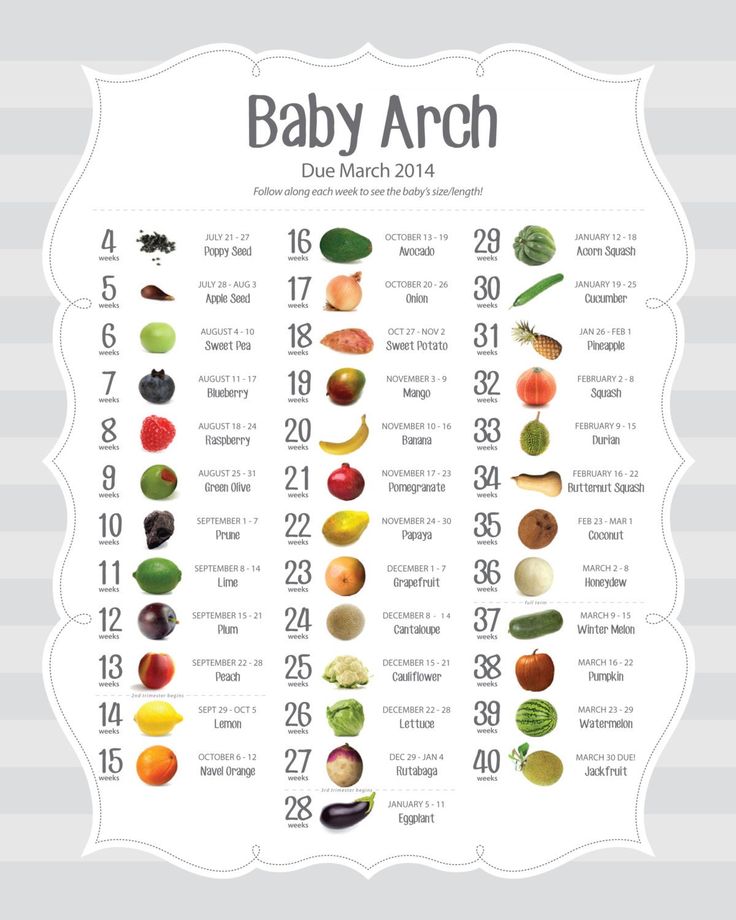 tab=0
tab=0 - 3 Vitamins That Are Best for Boosting Your Immunity.
https://health.clevelandclinic.org/3-vitamins-best-boosting-immunity/ - Are Avocados Good for You?
https://www.consumerreports.org/nutrition-healthy-eating/are-avocados-good-for-you-a2536502660/ - Avocado raw.
https://fdc.nal.usda.gov/fdc-app.html#/food-details/1102652/nutrients - Please squeeze the avocado!
https://medical.mit.edu/ask-lucy/2009/08/please-squeeze-avocado - Homemade or From the Jar: Which Baby Food Is Best?
https://health.clevelandclinic.org/from-the-jar-or-blender-which-baby-food-is-best/ - Avocados.
https://www.fondation-louisbonduelle.org/en/vegetable/avocado/ - When can I start giving my baby peanut butter?
https://www.healthychildren.org/English/tips-tools/ask-the-pediatrician/Pages/When-can-I-start-giving-my-baby-peanut-butter. aspx
aspx - CPMC Food Allergy Care.
https://www.sutterhealth.org/cpmc/services/allergy/food-allergy - EWG’s 2022 Shopper’s Guide to Pesticides in Produce.
https://www.ewg.org/foodnews/summary.php - Helpful hints for controlling gas (flatus).
https://www.med.umich.edu/fbd/docs/Gas%20reduction%20diet.pdf - Constipation.
https://www.urmc.rochester.edu/encyclopedia/content.aspx?contenttypeid=90&contentid=P01986 - Avocados The Nutrition Source
https://www.hsph.harvard.edu/nutritionsource/avocados/ - Fiber
https://medlineplus.gov/ency/article/002470.htm
The following two tabs change content below.
- Reviewer
- Author
Combined baby food menu. Complementary feeding schedule - Encyclopedia Baby food
Levchuk Victoria ©
Combination of baby food, sample menu for children from birth to the age of 12 months.
When reading any children's menu, it is important to note that not all children will eat the same amount of food as others, and most likely they will not like the same foods. This is due to different ages of introduction of complementary foods, and the fact that all children are different is also important. You should not blame yourself if the child does not eat complementary foods on schedule. The baby will eat as much adult food as he needs - you should trust your child.
Contents:
Formula and/or mother's milk are the most important sources of nutrition for a child under 12 months of age. Breastfeeding or formula feeding should NOT be replaced with all solid foods unless your pediatrician tells you otherwise.
We will not tire of repeating - all children are different, and the child may eat more or less than what is shown on these graphs. This menu and sample chart is described roughly and shows the options for eating solid foods. It does not take into account, nor list, the total daily intake of mother's milk or formula.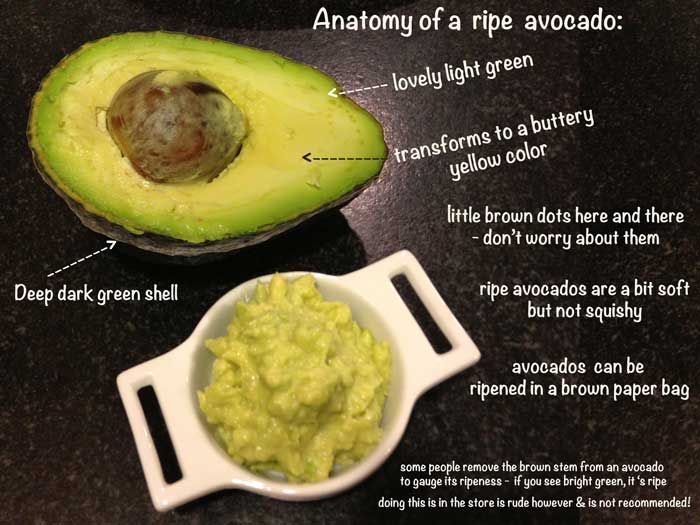
As always, the baby should be fed according to his or her signals and needs. A pediatrician should always be consulted if there is reason to be concerned that a child is not getting the proper amount of either milk or solid food.
Many breastfeeding mothers supplement with formula because their breast milk supply is low for a variety of reasons. We praise those mothers who continue to breastfeed their children with supplementary foods. Congratulations from the bottom of our hearts!
Sample menu for infants 0-6 months of age
Breakfast - Formula and/or mother's milk
Lunch - Formula and/or mother's milk
Dinner or mother's milk
Notes: The 3 main meals were included as an example only. This is not meant to be taken as a suggestion, nor is it meant to be limited to 3 meals a day. At this age and stage, most babies are hungry all the time and thus feed "around the clock" and on demand. The best way to feed your baby is as often as the baby needs.
The best way to feed your baby is as often as the baby needs.
Sample menu for babies 6-8 months of age
Wake up early in the morning - Formula and/or mother's milk
Breakfast - Formula and/or mother's milk
Baby cereal (optional) - 1-2 tablespoons
Fruit or vegetables (optional) - 1-2 tablespoons - mixed or singly
Lunch - Formula and/or mother's milk
Baby cereal (optional) - 1- 2 tablespoons
Fruits or vegetables (optional) - 2-4 tablespoons of each, or mix together.
Example: apples and carrots taste good together. Feed with or without porridge.
Snack/dinner - Formula milk and/or mother's milk
Fruit or vegetables (optional) - 1-2 tablespoons
3 meals a day at this age? Many babies are not ready to eat 3 "meals" throughout the day until 9-10 months of age. There are, however, children who start eating 3 times a day from 7-8 months. This is an exemplary menu, do not forget about the gradual introduction of food into the baby's diet. Also, breakfast or lunch is gradually introduced first, then dinner.
This is an exemplary menu, do not forget about the gradual introduction of food into the baby's diet. Also, breakfast or lunch is gradually introduced first, then dinner.
Feeding Tips: The introduction of a new product should be started gradually and with ½ teaspoon. Most likely at first the child will not eat more than 1/2 tablespoon, but gradually the baby gets used to solid food and it will be possible to increase the portion sizes.
Spitting out food: Many parents see their children spit food out of their mouths the first few tries. This is normal, however, it may also mean that the baby is not yet ready for solid foods; only parents decide whether the child is able to eat solid food.
Sample Infant Menu for 8-12 Months Old
Wake Up Early in the Morning - Formula and/or Mother's Milk
Breakfast - Formula and/or Mother's Milk 9004 optional) - 1-2 tablespoons
Fruit or vegetables - 4-6 tablespoons
Dairy products (optional) - Yoghurt - about 2 tablespoons
Lunch - Formula and/or mother's milk
Baby cereal or pasta, any grain products (optional) - 2-4 tablespoons
Meat / Meat-protein (alternate) (optional) - 2-4 tablespoons 6 tablespoons in total of each or can be mixed with porridge
Example: Rice mixed with peas served with pear puree separately
Dairy (optional) - Yoghurt or cheese
protein without grains is also a menu option.
Lunch grains with fruits and vegetables without protein is another option.
Snack/dinner - Formula and/or mother's milk
Grains (optional) (i.e. pasta, rice) - 2-4 tablespoons
Meat - (optional) - 2 tablespoons
Fruits and/or vegetables - 4-6 tablespoons in total of each type Example: Tofu mixed with avocado, served with applesauce and blueberries separately
Dairy products - yoghurt or Bryndza (optional)
Notes: 3 -x meals a day? Keep in mind that even in this age group, many children are still not ready to eat 3 meals a day until 9-10 months. Many babies do not begin solid foods before 6 months of age and not all babies will eat the same foods and amounts of food.
Many babies can eat 120-170 grams of food per day at 6 or 7 months, while others who are just starting complementary foods will be in the 30-60 grams range.
Follow your pediatrician's recommendations for complementary foods and include a balanced and varied diet.
It must be remembered that a pediatrician's consultation regarding the introduction of complementary foods for the baby and discussion of any new products, in order to avoid food allergies, is mandatory.
To calculate your daily milk intake, you can use the following:
Read more about your baby's serving size here.
Does the child eat enough food?
How much solid food a child will eat depends on many different things.
- A baby who started solid foods at 4 months of age is likely to eat more solid foods than a baby who started solid foods at 6 months.
- A child who eats soft cut foods eats less than a child who eats puree from a spoon.
- How much a child will eat also depends on the individual child's appetite. Just like adults, some children will eat more than others due to their individual needs.
Catering in the preschool educational institution - MADOU "Kindergarten of the combined type No.
 19", Khabarovsk
19", Khabarovsk It's no secret that good nutrition is the key to health. What can we say about the growing children's body, the development of which requires a sufficient amount of proteins and carbohydrates, vitamins and minerals.
All this is necessary for the healthy development of the child, increasing his intellectual and physical activity.
MENU
03/27/2023
03/28/2023
03/29/2023
03/30/2023
03/31/2023
Children's meals in our preschool institution are organized on the following legislative basis:
1. SanPiN 2.3/2.4.3590-20 "Sanitary and epidemiological requirements for the organization of public catering of the population", which came into force on January 1, 2021 and will be valid until January 1, 2027.
2. Order of the Ministry of Health and Social Development of the Russian Federation and the Ministry of Education and Science of the Russian Federation dated March 11, 2012 No. 213n / 178 “On Approval of Guidelines for Organizing Nutrition for Students and Pupils of Educational Institutions”
213n / 178 “On Approval of Guidelines for Organizing Nutrition for Students and Pupils of Educational Institutions”
SanPiN 2.3 / 2.4.3590- 20 establishes a number of specific requirements put forward for the construction of the catering process in preschool institutions:
- for food products that are not allowed when catering for children, the use of which is prohibited;
- to the average daily set of food products (minimum) for children under 7 years old;
- to the mass of portions for children depending on age;
- to the list of vitamins and minerals (daily) and indicates the need for nutrients, energy;
- to the percentage distribution of nutrient and energy intake by meals, depending on the time spent in the organization;
- to the diet, depending on the length of stay of children in a preschool organization;
- to the replacement of food products, taking into account their nutritional value;
- to the number of meals depending on the mode of functioning of the organization and mode of training, etc.

Kindergarten Nutrition Norms and Rules
If the children's menu is made correctly, then the child gets sick less often, is less susceptible to infection with viruses, feels better and is ready to learn and play.
Frequency and timing of meals
Regulatory documents provide for a requirement for a kindergarten to separate the products consumed by preschool children during their stay in kindergarten groups.
When allocating meals, the age of the children and the time during which the child attends kindergarten are taken into account.
Diet depending on the length of stay of children in a preschool organization
The number of meals depends on the mode of study and the mode of functioning of the organization.
The number of meals depending on the operating mode of the organization and the training mode
The working hours of our kindergarten is 12 hours, so the daily menu includes 5 full meals, which are held at a certain time.
All meals are formed on the basis of certain items shown in the table below.
|
Meal times | Diet components |
|---|---|
| Breakfast | First course |
| Sandwich | |
| Hot drink | |
| Lunch | Salad |
| First course | |
| Second course | |
| Snack | Drink |
| Bakery or confectionery product | |
| Dinner | |
| First course | |
| Hot drink |
At the same time, it is important that 3 meals a day are served hot - these can be cereals, meatballs, soups and casseroles. This rule applies equally to all preschool institutions.
And each meal contains a certain amount of proteins, fats and carbohydrates. Of great importance is the calorie content of dishes, since food should first of all saturate the body with energy.
Of great importance is the calorie content of dishes, since food should first of all saturate the body with energy.
During the day in kindergarten, the child receives about 80% of the daily ration.
Percentage distribution of nutrients and energy consumption by meals depending on the time spent in the organization The maximum that can be offered to a child in the morning at home is a mug of tea and a small sandwich with butter.
Products allowed in the diet of children
The preschool organization provides for the daily use of the following products in the nutrition of children: milk, sour-milk drinks, sour cream, meat, poultry or fish, potatoes, vegetables, fruits, bread, cereals, butter and vegetable oil, sugar, salt.
Other products (cottage cheese, sour cream, cheese, eggs, juices, etc.) are included 2-3 times a week.
In addition, the children's menu must include juices, fruit compotes, kissels.
Boiled drinking water is available for children at any time of the day, which is changed every 3 hours.
Your child's daily diet should include fresh fruits and vegetables, a good source of fibre. In winter, we diversify the diet of children with dried fruits: prunes, dried apricots, raisins, apples. For an afternoon snack or lunch, children are offered fresh fruit as a snack.
Regulatory documents define the average daily set of food products (minimum) for children under 7 years of age (in net g, ml per 1 child per day).
There is a Food Replacement Table in grams (net), taking into account their nutritional value, which is allowed to be used in the nutrition of children's educational institutions.
Prohibited foods
The list of food products that are not allowed when catering for children in a preschool organization has been significantly revised. Now this list consists of 45 items.
A special criterion when choosing products for the children's menu is the fat content of meat products. All dishes are steamed or with a minimum amount of vegetable oil. It is forbidden to use beef on the bone and fatty pork in the children's menu. Chicken is added to the diet as animal protein, and turkey, lean lamb, and rabbit meat can also be added.
It is forbidden to use beef on the bone and fatty pork in the children's menu. Chicken is added to the diet as animal protein, and turkey, lean lamb, and rabbit meat can also be added.
Do not include in the diet of children in preschool institutions dishes cooked with a lot of vegetable oil, such as fried potatoes, popcorn, etc. And vegetable oil can only be used as a dressing for vegetable salads.
Baby food is essential to provide the growing body with the necessary vitamins and nutrients for healthy development. To ensure the Need for nutrients, energy, vitamins and minerals (daily), the main menu should be controlled - it should consist of a mandatory set of products.
Do not give children too many sweets. Chocolates, marshmallows are best replaced with jelly, marshmallow, marmalade, muffin. And from drinks, soda and natural coffee are prohibited. However, coffee drinks such as chicory are healthy and often liked by children.
It is forbidden to feed children food that has been prepared outside the kindergarten. For example, if your child is having a birthday and you plan to celebrate it with the rest of the children in the group and want to bring a cake or a large pizza to the celebration, then this must be agreed in advance with the group teacher or leader. Other parents should not object, however, as some children may be allergic or intolerant to certain ingredients.
Any violation of the rules and standards can harm the child, so the staff of the preschool organization tries to strictly comply with all the norms established by law.
New order and requirements for the preparation of the menu
Main menu
The main menu is developed for at least two weeks for each age group: for children 1.5-3 years old and 3-7 years old.
food is prepared by kindergarten workers. The menu is approved by the head - manager.
Our kindergarten operates according to an approved 10-day menu, taking into account the recommended average daily nutritional intake.
The diet in the kindergarten is worked out according to the requirements of the developing organism at a certain age.
The menu contains information on the quantitative composition of the main nutrients and energy (proteins, fats, carbohydrates) for each dish, meal, for each day and in general for the period of its implementation
Daily menu
Kindergarten is required to notify parents of the food list for each day that is served at meals. Notification is made by providing the menu for the current day in all age groups in the corners for parents, at the food stand in the corridor of the kindergarten and on the official website of the preschool educational institution.
The daily menu of the main meal is compiled by the person responsible for meals for the day for all age groups.
The names of the dishes in the menu correspond to their names in the technological cards.
The head nurse ensures that the Mass of servings for children depending on age (in grams), as well as the total volume of dishes for meals (in grams - no less) are within the limits specified in tables 1 and 3 of Appendix 9 SanPiN 2.3/2.4.3590-20, respectively.
Children's preschool groups are divided into two age categories, based on which the diet is selected:
- menu for a group of young children (from 1.5 to 3 years) should include 1400 kcal per day;
- menu for junior, middle and senior groups aged 3 to 7 years should include 1800 kcal.
In general, the rules and norms of cooking for all age categories do not differ. But for younger groups, cooks cut vegetables more finely, with age, the portion size increases, because older children need additional energy for outdoor and active games, as well as for development and study.
Individual menu
For the parents of an allergic child, the topic of food in kindergarten is quite painful. The child is forced to refuse some dishes and therefore can remain hungry for half a day.
The child is forced to refuse some dishes and therefore can remain hungry for half a day.
Children in need of medical and/or dietary nutrition can now eat according to an individual menu or food brought from home.
According to the new SanPiN 2.3 / 2.4.3590-20, an individual menu should be developed in kindergarten for children in need of medical and / or dietary nutrition.
SanPiN does not provide for a standard form of an individual menu, so a kindergarten can develop it on its own. If the child eats according to an individual menu, the distribution of food rations to him will be carried out under the control of a responsible person.
At the same time, diets prescribed by the child's doctor must be prescribed in the menu. H The appointment must be provided by the parents (legal representatives) of the child. You must first visit a pediatrician and take an allergy test to identify a product that is not recommended for eating. After that, with the certificate received, you can already contact the head of the kindergarten with the question of compiling an individual menu for the child.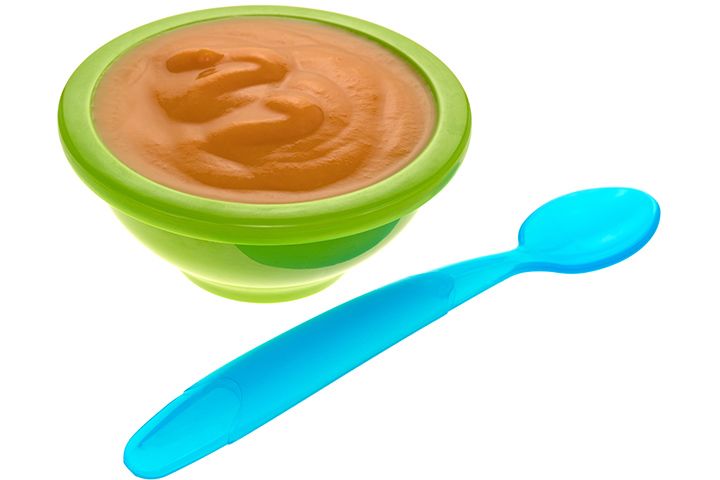
Conditions for feeding children with homemade food
If the parents have chosen the second option (feeding home-cooked food), special conditions must be created in the kindergarten in a specially designated room or place. A mandatory requirement is that it must have conditions for washing hands, as well as tables and chairs according to the number of children eating homemade food. However, there should be a refrigerator and a microwave in the room.
If parents bring prepared food from home for children in need of medical and / or dietary nutrition, an individual menu for them can not be compiled in kindergarten.
How much
should a child receive nutrients?
Improper nutrition, which is insufficient, leads to poor weight gain, a decrease in physical abilities, lowers the immune system, which opens up access to pathologies and their severe forms.
In the presence of exceeding the established norms, there is an accumulation of excess weight, the progression of obesity and the manifestation of a number of other pathologies associated with an increase in metabolism, as well as violations of the heart and vascular system.
That is why, when compiling a diet, one must be responsible, with increased attention and control, for the correct ratio of nutrients. Their optimal balance will allow maintaining the child's body in a healthy form
Food pyramid
Nutrition control in kindergarten
The administration of the kindergarten pays special attention to the products that come for the nutrition of preschool children. Children in the garden are fed only with high-quality products.
* Commercial offers are considered, according to the results of which a supplier company is selected.
Food suppliers
Any company that has proven itself and has provided regulatory documents on the products offered, where it is required to display not only the cost of supplies, but also the process of manufacturing products, as well as all quality certificates, can participate.
Previously, only separate transportation (transportation) of food (food) raw materials, semi-finished products and finished food products to kindergarten was allowed, but now joint transportation is allowed, subject to the availability of hermetic packaging, as well as subject to the temperature and humidity conditions of storage and transportation.
After the application for the products has been agreed upon and their delivery has been debugged, control is carried out in the preschool organization itself daily.
All menus must comply with SanPiN standards. And the products, before they get to the table, must undergo heat treatment. It is also worth noting that food deliveries within a 5-day working week are carried out daily, which indicates the freshness of all ingredients. According to the terms of delivery, the residual degree of freshness of the products brought to the kindergarten must be at least 80%.
Daily chefs prepare fresh and unique dishes. Before serving dishes, not only the chef takes a sample, but also the head nurse.
Before serving dishes, not only the chef takes a sample, but also the head nurse.
To control the organization of children's nutrition, the quality of the delivered products and compliance with sanitary and hygienic requirements during the preparation and distribution of food, a marriage committee was created in the institution. The issuance of ready-made food is allowed only after the inspection by the marriage commission consisting of at least 3 people. The results of the control are recorded in the journal of marriage of finished culinary products. In accordance with the schedule, the grading commission takes a sample of the finished dishes.
Also every day the cooks in the kindergarten take a sample from each dish, which is labeled and stored in a separate refrigerator for 48 hours. Labels and markings of products are stored for the same amount of time.
In the kindergarten year-round artificial C-vitaminization of the finished 3rd course is carried out.
General control over the organization and quality of nutrition of pupils, fortification of dishes, laying food, cooking, food output, food taste, sanitary condition of the catering unit and its equipment, correct storage, compliance with the deadlines for the sale of products is assigned to the administration of the preschool educational institution.
The catering unit is equipped with all the necessary technological, refrigeration and washing equipment, production equipment, kitchen utensils. A set of catering equipment is adopted in accordance with SanPiN standards.
ADVICE TO PARENTS
Preparing for Kindergarten
It is recommended to get acquainted with the menu in the group at the stage of preparing the child for kindergarten. It is also very important to pay attention to the time of meals, because the children in the group live according to a certain daily routine. Time for games, meals and sleep is limited by rules and regulations.
Time for games, meals and sleep is limited by rules and regulations.
It is necessary to gradually switch to a new diet so that the child can smoothly adapt to the new rules. But parents should also understand that it will be necessary to adhere to this diet not only on weekends, when the baby will not go to kindergarten, but also before school time. Children who are not used to living according to the daily routine will find it harder to adapt to the new environment in kindergarten.
It's a good idea to take a sample preschool menu and prepare these meals for your baby at home. You can accustom your baby to the main dishes within a few weeks. The main difficulty may be related to the fact that, according to the rules, a new dish is prepared every day in kindergarten: cereals, soups and main dishes should not be repeated. Moreover, the menu in some kindergartens is compiled in such a way that dishes are not repeated for 20 days. It is impossible to create such a varied diet at home. Of course, a little fussy person may refuse new dishes at first, so it is better to do without using semi-finished products, sauces, spices, spices and ready-made products from shops and cafes during this period.
Of course, a little fussy person may refuse new dishes at first, so it is better to do without using semi-finished products, sauces, spices, spices and ready-made products from shops and cafes during this period.
The first days the child will spend only a few hours in kindergarten. This will allow the baby to gradually adapt to the new team, and separation from the mother will not be so painful. But still, due to stress, the child may lose his appetite and he will refuse not only food in kindergarten, but also at home. But such cases are usually the exception. Most children get used to kindergarten quickly, make friends in a group and sit down to dine with the rest of the children.
HOW TO FEED YOUR CHILDREN CORRECTLY
- Your baby should be fed at a fixed time.
- Give only what is due according to age.
- Children should be fed calmly, patiently, giving them the opportunity to chew their food well.
- Never force-feed a child.

- Do not distract from eating by reading or playing.
- Do not use rewards for eating, threats and punishments for not eating.
ENCOURAGE:
- the desire of the child to eat independently
- his desire to participate in setting and cleaning the table.
TEACH CHILDREN:
- to wash hands thoroughly before eating;
- chew food with mouth closed;
- is only at the table;
- correctly use a spoon, fork, knife;
- getting up from the table, check your place, whether it is clean enough, if necessary, clean it yourself;
- after finishing the meal, thank those who prepared it, served the table.
PROPER NUTRITION AFFECTS CHILDREN'S INTELLIGENCE
Foods rich in protein - meat, fish, eggs - stay longer in the stomach and require much more digestive juices for digestion. Therefore, they should be used in the morning, and for dinner it is better to offer the baby dairy and vegetable food so that the stomach can rest during sleep and not waste energy on processing “heavy” food.
Do you know that not only their health, but also their intellectual development depends on proper nutrition of children? The good functioning of the brain requires protein, vitamins and unsaturated fatty acids, in addition, the work of the mind absorbs a large amount of energy.
Thus, proper nutrition affects the intelligence of children.
So:
- Tomatoes increase attention and cellular metabolism, rejuvenate cells, the best natural remedy for cancer.
- Garlic increases efficiency, promotes cleansing of toxins and reduces pressure.
- Lentil strengthens the nervous system, stimulates the brain.
- Yoghurt improves mood and strengthens bones and teeth.
- Rosemary improves blood circulation and gives energy.
- Carrot enhances concentration.
- Wholemeal bread increases the activity of the mind, reduces the effects of stress.

- Pumpkin promotes the removal of toxins and strengthens the immune system.
- Seafood increases creativity.
- Avocado promotes cerebral circulation.
- Vegetable oil (olive, rapeseed, walnut) contains unsaturated fatty acids that heal the entire body.
- Cucumber is a source of energy.
- Sea fish helps to increase metabolism and mental activity.
- Green peas strengthens the nerves and expands the possibilities of the intellect.
- Low Fat Cheese is an antidepressant and energy source.
- Bananas help the body produce serotonin (happiness hormone), improve mood, promote rapid recovery.
- Nuts stimulate the intellect, give inner peace and relaxation to overstressed muscles.
- Sea Salt is needed for proper electrolyte balance and promotes fat burning.

Home Nutrition Guidelines
Nutritionists recommend four meals a day for preschoolers: breakfast, lunch, afternoon tea, and dinner. Special wisdom in compiling the diet of a preschooler is not required. It is enough that the food is always fresh and varied.
Do not indulge your children's habits by feeding them only sausages or chips every day, even if they love it very much. Mandatory dishes from cereals, vegetables, fresh meat and fruit desserts.
But many mothers have problems with the variety of dishes, especially for breakfast and dinner, since the child usually has lunch in kindergarten. And if at an earlier age, as a rule, porridge and children's curds helped out, then for older children you have to invent something more interesting.
A good choice in a situation with a little pickiness is a variety of cereals (combinations of cereals can be used), boiled in milk with fillers in the form of various vegetables, fruits and berries. Feel free to experiment by adding pumpkin, carrots, raisins, prunes ...
Feel free to experiment by adding pumpkin, carrots, raisins, prunes ...
In winter, you can use country stocks: frozen apples, strawberries, raspberries, blackberries and others. Don't have culinary talent? But for your child, you can decide to master the basics of cooking all kinds of dishes from cottage cheese, children love cottage cheese, puddings, dumplings, casseroles, and even more so, is it worth reminding you of the benefits of cottage cheese ?!
Do not forget about egg dishes - a variety of omelettes, sweet omelettes, scrambled eggs with vegetables and herbs, and other delights!
The constant struggle of parents with snacking their children often ends in failure, this happens most often due to the lack of flexibility and resourcefulness of the first. Has a child run into the fresh air, asks for a bite to eat, and is there still a lot of time before dinner? Keep fresh fruits for such cases, as well as dried fruits - dried apricots, raisins, prunes and nuts (but not salted or in caramel - do not forget about the threat of the presence of the most harmful aflatoxins in them!).